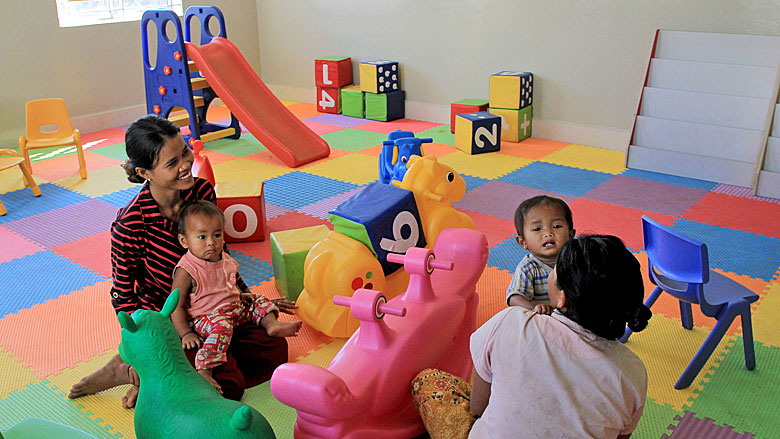In Cambodia, preschool attendance isn’t very high and children often don’t have the skills they need to do well when they start primary school. Impact evaluation evidence has shown that preschool or other early childhood education programs boost children’s skills and help improve their readiness for primary school. This evaluation will help the Government of Cambodia inform the development of a cost-effective and scalable early childhood education program for Cambodia.
Research area: Early Childhood Nutrition, Development and Health
Country: Cambodia
Evaluation Sample: 305 villages
Timeline: 2015-2019
Intervention: Education, Information, Stimulation
Collaborators: Deon Filmer, World Bank; Adrien Bouguen, University of Mannheim, Germany; Jan Berkes, DIW Berlin
Partners: Education Research Council, Ministry of Education, Youth and Sport, Government of Cambodia; Department of Early Childhood Education, Ministry of Education, Youth and Sport, Government of Cambodia; The World Bank
World Bank Task Team Lead (TTL): Tsuyoshi Fukao
Policy Issue
Preschool programs are a valuable route for children to acquire the cognitive, physical and socio-emotional skills they need to do well in primary school and later in life. In poor countries, where there are so many competing needs, it can be a challenge to develop cost-effective preschool programs and ensure that families have the interest and access to send their children. This evaluation in Cambodia will examine whether a program that combines building and renovating community preschools with face-to-face meetings with parents on the importance of childhood education is an effective route for boosting enrollment and improving children’s cognitive and socio-emotional development.
Context
Cambodia is a low-income country and almost 20 percent of the population lives in poverty. The country has made important strides in improving maternal and child health and boosting primary school enrollment to just over 95 percent, based on 2014 World Bank figures. However, poverty, lack of access to improved water and sanitation, along with limited early childhood development programs and knowledge means that Cambodia’s youngest aren’t getting the right start in life. About a third of children under the age of five are stunted, which can have lifelong effects on socio-emotional development, cognitive skills and, ultimately, the ability to be a productive adult.
The Government of Cambodia has a national preschool program but enrollment is low and quality is uneven. In 2012, 56 percent of children aged five and 21 percent of children aged three to four were enrolled in preschool programs, according to the Global Partnership for Education. Part of the problem is that facilities are lacking and parental demand is low, sometimes due to a lack of knowledge of the important role early education plays in children’s development. A previous program, which ran between 2008 and 2012 through the country’s Education Sector Support Scale Up Action program, faced implementation problems and had limited success at increasing preschool enrollment. In line with the country’s 2014-2018 national education sector strategic plan, the government is working to boost use of early childhood programs by increasing availability of preschools and educating parents about their importance. The evaluation, carried out with the support of the Government of Cambodia, will provide evidence the government can use in deciding how to continue the program and whether any changes are needed to improve quality and access.
